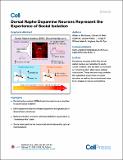| dc.contributor.author | Matthews, Gillian A. | |
| dc.contributor.author | Nieh, Edward H. | |
| dc.contributor.author | Vander Weele, Caitlin M. | |
| dc.contributor.author | Halbert, Sarah A. | |
| dc.contributor.author | Pradhan, Roma V. | |
| dc.contributor.author | Yosafat, Ariella S. | |
| dc.contributor.author | Glober, Gordon F. | |
| dc.contributor.author | Izadmehr, Ehsan M. | |
| dc.contributor.author | Thomas, Rain E. | |
| dc.contributor.author | Lacy, Gabrielle D. | |
| dc.contributor.author | Wildes, Craig P. | |
| dc.contributor.author | Ungless, Mark A. | |
| dc.contributor.author | Tye, Kay | |
| dc.contributor.author | Matthews, Gillian A. | |
| dc.contributor.author | Nieh, Edward H. | |
| dc.contributor.author | Vander Weele, Caitlin M. | |
| dc.contributor.author | Halbert, Sarah A. | |
| dc.contributor.author | Pradhan, Roma V. | |
| dc.contributor.author | Yosafat, Ariella S. | |
| dc.contributor.author | Glober, Gordon F. | |
| dc.contributor.author | Izadmehr, Ehsan M. | |
| dc.contributor.author | Thomas, Rain E. | |
| dc.contributor.author | Lacy, Gabrielle D. | |
| dc.contributor.author | Wildes, Craig P. | |
| dc.date.accessioned | 2016-05-25T14:47:26Z | |
| dc.date.available | 2016-05-25T14:47:26Z | |
| dc.date.issued | 2016-02 | |
| dc.date.submitted | 2015-09 | |
| dc.identifier.issn | 00928674 | |
| dc.identifier.issn | 1097-4172 | |
| dc.identifier.uri | http://hdl.handle.net/1721.1/102676 | |
| dc.description.abstract | The motivation to seek social contact may arise from either positive or negative emotional states, as social interaction can be rewarding and social isolation can be aversive. While ventral tegmental area (VTA) dopamine (DA) neurons may mediate social reward, a cellular substrate for the negative affective state of loneliness has remained elusive. Here, we identify a functional role for DA neurons in the dorsal raphe nucleus (DRN), in which we observe synaptic changes following acute social isolation. DRN DA neurons
show increased activity upon social contact following isolation, revealed by in vivo calcium imaging. Optogenetic activation of DRN DA neurons increases social preference but causes place avoidance. Furthermore, these neurons are necessary for promoting rebound sociability following an acute period of isolation. Finally, the degree to which these neurons modulate behavior is predicted by social rank, together supporting a role for DRN dopamine neurons in mediating a loneliness-like state. | en_US |
| dc.description.sponsorship | McKnight Foundation (New York Stem Cell Foundation-Robertson Investigator and McKnight Scholar) | en_US |
| dc.description.sponsorship | JPB Foundation | en_US |
| dc.description.sponsorship | Whitehall Foundation | en_US |
| dc.description.sponsorship | Klingenstein Foundation | en_US |
| dc.description.sponsorship | Brain & Behavior Research Foundation (NARSAD Young Investigator Award) | en_US |
| dc.description.sponsorship | Alfred P. Sloan Foundation | en_US |
| dc.description.sponsorship | Whitehead Institute for Biomedical Research (Whitehead Career Development Chair) | en_US |
| dc.description.sponsorship | National Institutes of Health (U.S.) (R01-MH102441-01 (NIMH)) | en_US |
| dc.description.sponsorship | National Institutes of Health (U.S.) (NIH grant U54-CA112967) | en_US |
| dc.description.sponsorship | National Institute on Aging (RF1-AG047661-01 (NIA)) | en_US |
| dc.description.sponsorship | National Institutes of Health (U.S.) (NIH Director’s New Investigator Award DP2- DK-102256-01 (NIDDK)) | en_US |
| dc.description.sponsorship | Medical Research Council (Great Britain) (MC-A654-5QB70) | en_US |
| dc.description.sponsorship | National Institute of General Medical Sciences (U.S.) (NIGMS T32GM007484) | en_US |
| dc.language.iso | en_US | |
| dc.publisher | Cell Press/Elsevier | en_US |
| dc.relation.isversionof | http://dx.doi.org/10.1016/j.cell.2015.12.040 | en_US |
| dc.rights | Creative Commons Attribution 4.0 International License | en_US |
| dc.rights.uri | http://creativecommons.org/licenses/by/4.0/ | en_US |
| dc.source | Elsevier | en_US |
| dc.title | Dorsal Raphe Dopamine Neurons Represent the Experience of Social Isolation | en_US |
| dc.type | Article | en_US |
| dc.identifier.citation | Matthews, Gillian A., Edward H. Nieh, Caitlin M. Vander Weele, Sarah A. Halbert, Roma V. Pradhan, Ariella S. Yosafat, Gordon F. Glober, et al. “Dorsal Raphe Dopamine Neurons Represent the Experience of Social Isolation.” Cell 164, no. 4 (February 2016): 617–631. | en_US |
| dc.contributor.department | Massachusetts Institute of Technology. Department of Brain and Cognitive Sciences | en_US |
| dc.contributor.department | Picower Institute for Learning and Memory | en_US |
| dc.contributor.mitauthor | Matthews, Gillian A. | en_US |
| dc.contributor.mitauthor | Nieh, Edward H. | en_US |
| dc.contributor.mitauthor | Vander Weele, Caitlin M. | en_US |
| dc.contributor.mitauthor | Halbert, Sarah A. | en_US |
| dc.contributor.mitauthor | Pradhan, Roma V. | en_US |
| dc.contributor.mitauthor | Yosafat, Ariella S. | en_US |
| dc.contributor.mitauthor | Glober, Gordon F. | en_US |
| dc.contributor.mitauthor | Izadmehr, Ehsan M. | en_US |
| dc.contributor.mitauthor | Thomas, Rain E. | en_US |
| dc.contributor.mitauthor | Lacy, Gabrielle D. | en_US |
| dc.contributor.mitauthor | Wildes, Craig P. | en_US |
| dc.contributor.mitauthor | Tye, Kay | en_US |
| dc.relation.journal | Cell | en_US |
| dc.eprint.version | Final published version | en_US |
| dc.type.uri | http://purl.org/eprint/type/JournalArticle | en_US |
| eprint.status | http://purl.org/eprint/status/PeerReviewed | en_US |
| dspace.orderedauthors | Matthews, Gillian A.; Nieh, Edward H.; Vander Weele, Caitlin M.; Halbert, Sarah A.; Pradhan, Roma V.; Yosafat, Ariella S.; Glober, Gordon F.; Izadmehr, Ehsan M.; Thomas, Rain E.; Lacy, Gabrielle D.; Wildes, Craig P.; Ungless, Mark A.; Tye, Kay M. | en_US |
| dspace.embargo.terms | N | en_US |
| dc.identifier.orcid | https://orcid.org/0000-0002-8269-2615 | |
| dc.identifier.orcid | https://orcid.org/0000-0001-6754-0333 | |
| dc.identifier.orcid | https://orcid.org/0000-0003-2154-6224 | |
| mit.license | PUBLISHER_CC | en_US |
| mit.metadata.status | Complete | |
